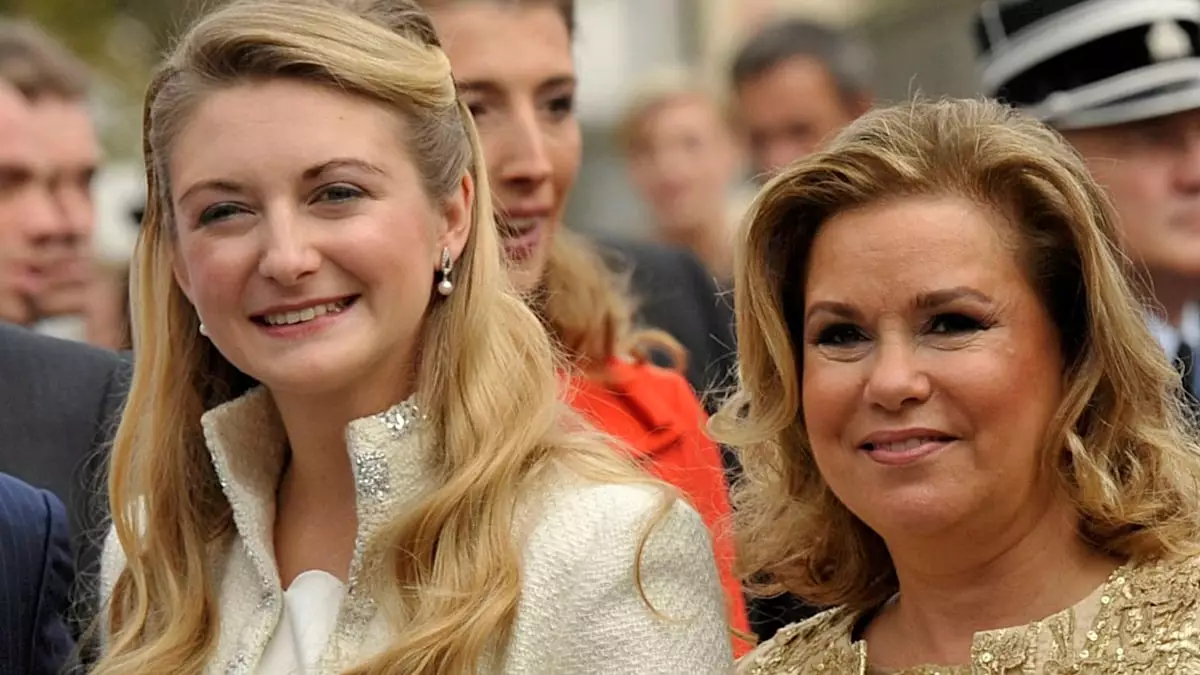Royal families often place a significant emphasis on tradition, but it’s the personal touches that truly humanize these figures of authority. One poignant example of this interplay of tradition and personal sentiment is the bond shared between Hereditary Grand Duchess Stéphanie of Luxembourg and her mother-in-law, Grand Duchess Maria-Teresa. By donning a gown that transcends mere fabric and thread, Stéphanie has not only showcased a striking sense of style but has also woven a narrative of familial ties and emotional inheritance. When Stéphanie chose to wear an Oscar De La Renta gown originally worn by Maria-Teresa during the Queen Elizabeth II Diamond Jubilee celebrations, it underscored a post-modern take on royal fashion—one that celebrates continuity while embracing evolution.
Fashion as a Generational Bridge
The recent Singapore State Visit Gala Dinner demonstrated how royal wardrobes can serve as a bridge across generations. Stéphanie, at 41, exhibited not just elegance but a refined understanding of style that revitalizes vintage pieces. The icy blue dress, adorned with shimmering crystals and crafted from fabric that seems almost ethereal, was undeniably glamorous. However, it was the alterations made by Stéphanie—raising the neckline and removing the belt—that revealed her personal style while honoring her mother-in-law’s choice. This is where royal fashion becomes intriguing: it’s no longer about strict adherence to tradition, but rather about creating new meanings through the past. The gown’s evolution mirrors Stéphanie’s own journey as a member of the royal family.
Accessorizing the Legacy
Accessories play a crucial role in royal attire, and for Stéphanie, the choice of the Diamond Choker Tiara was particularly notable. This beautiful tiara, with its pearls and intricate lattice design, has an extensive history within the family, having been frequently worn by Maria-Teresa. The decision to wear this piece emphasizes a shared royal identity—one that transcends time and speaks volumes about the mutual respect and admiration between the two women. Furthermore, by opting for a piece with an emotional backstory, Stéphanie added a layer of depth to her ensemble; she didn’t just wear a tiara, but a piece of family heritage.
Fashioning New Relationships
Stéphanie and Maria-Teresa’s bond was evidently fortified during challenging times, notably after the passing of Stéphanie’s own mother shortly after her wedding. The connection they share now—fueled by mutual love, respect, and mentorship amidst the backdrop of royal responsibilities—showcases a valuable dynamic often overlooked in the gilded realms of monarchy. In her own words, Stéphanie described Maria-Teresa as “very kind,” reflecting admiration that deepens far beyond superficial appearances. This familial warmth beautifully contrasts with the often cold perceptions of royal life, asserting that human emotions are very much at play in these ornate halls.
The Echo of Tradition in Modern Royalty
The proclivity for pulling from family wardrobes speaks to a larger cultural narrative prevalent among modern royalty. Like many contemporary women, royal figures like Stéphanie and Maria-Teresa find empowerment in eco-conscious fashion choices while still paying homage to traditional craftsmanship. The gown’s prior appearance at grand occasions reinforces that every piece carries stories and significance, prompting an inspiration rooted in history and familial love. The act of recycling garments illustrates a refreshing awareness of sustainability, challenging the consumerist culture that has often plagued fashion.
Beyond Fashion—A Musical Connection
Stéphanie and her husband, Hereditary Grand Duke Guillaume, share a delightful bond rooted in a love for music—an appreciation that adds another dimension to their family dynamic. In her reflections, Stéphanie speaks of Guillaume’s musical talents, evoking a sense of partnership that harmonizes with their roles as public figures. While she maintains traditional royal duties, their shared interests hold them together, portraying them as relatable figures rather than mere icons. Such sentiments highlight the importance of fostering deep personal relationships amidst the rigorous expectations of royal life.
In essence, the intertwining narratives of Stéphanie effectively demonstrate that even in the world of royalty, where tradition is paramount, powerful connections thrive through shared experiences, emotional growth, and evolving identities.

